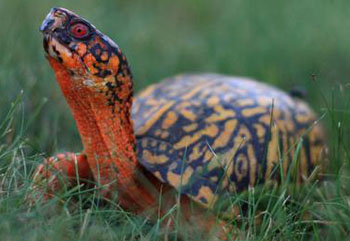No matter how you utilize open spaces, it is critical we all act as good stewards of nature. Like many, we have spent time picking up trash when we are out fishing and hiking and always include a public service message about “carry in/carry out” in our lectures.
That’s why I was both upset and happy when I read an article about an exotic turtle-smuggling operation that was recently busted. The $2.25 million operation was financed by a Chinese citizen was has been extradited to New Jersey.
The ring smuggled at least 1,500 protected turtles out of the U.S., many of whom were bound with duct tape and stuffed into socks and sent to multiple locations. According to authorities, most of the turtles sell on the Hong Kong pet trade market for $650 to $2,000 each, with the exception of the Eastern Box Turtles, which can fetch up to $20,000 per turtle.
While the smuggling really made my blood boil, I was incredibly happy authorities were able to break up this ring and put a stop to this horrible crime against nature.
The Eastern Box Turtle
The Eastern Box Turtle is native to New Jersey and one of my favorite Jersey animals. They have absolutely lovely coloring on their shells, making them easily identifiable. They can live anywhere from 50-100 years and unlike most turtles, spend their lives on land.

The Eastern Box Turtle is quite the homebody, as its total territory is less than 250 square yards. If you ever come across an injured Box Turtle, make sure to note its location before taking it to a licensed wildlife rehabilitator. If it is released into the wild in an unfamiliar area, its future is grim, indeed.
Due to multiple issues, including fragmentation of habitat, slow reproductive rates, and poaching, they are now listed as a Species of Special Concern by the Endangered and Nongame Species Program (ENSP).
If you ever come across an Eastern Box Turtle, consider yourself lucky you had the opportunity to see one in its habitat! Appreciate its beauty, make sure it is safe (not in the middle of a road), and if it is safe and uninjured, leave it alone.